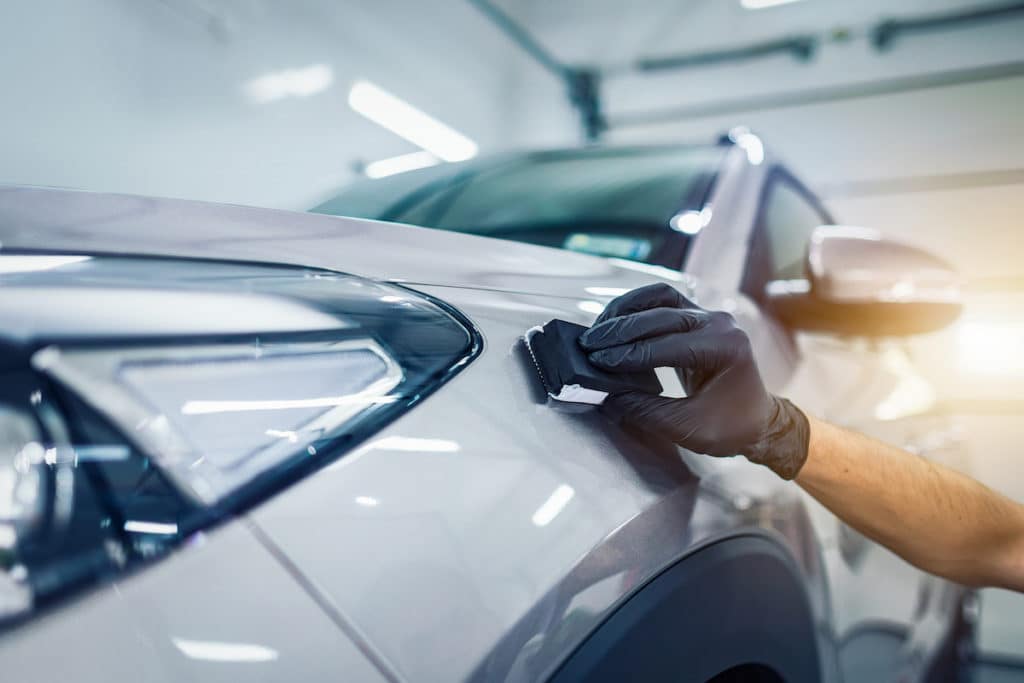Why Ceramic Finish Is the Ultimate Remedy for a Remarkable End Up
Ceramic coating has actually emerged as a leading solution for those looking for a perfect surface for their cars, many thanks to its exceptional durability and safety features. What aspects genuinely established ceramic layer apart?
What Is Ceramic Finish?

When used appropriately, ceramic finishing develops a hydrophobic surface that pushes back water and dust, making it easier to clean and preserve. Unlike traditional waxes or sealants, which usually supply short-term protection, ceramic coatings can last for a number of years, depending upon the item top quality and application approach. The procedure of using ceramic covering needs precise prep work, including detailed cleaning and occasionally repaint adjustment, to make sure optimum bonding and effectiveness.
Ceramic coatings are not limited to auto surface areas; they can additionally be utilized on various materials, consisting of glass, steel, and plastics, supplying a versatile remedy for improving protection. On the whole, ceramic covering represents a significant advancement in surface protection modern technology, combining both aesthetic and useful benefits for a vast array of applications.
Benefits of Ceramic Covering
While several surface defense choices exist, the benefits of ceramic finish stand apart due to its one-of-a-kind homes and durable efficiency. One of the key benefits is its remarkable sturdiness. Ceramic Coating Philadelphia. Unlike conventional wax or sealers that require frequent reapplication, ceramic layers supply a resilient layer that can last for several years, considerably decreasing maintenance efforts
An additional notable benefit is boosted security versus ecological contaminants. Ceramic finishings develop a hydrophobic surface that fends off water, dust, and different toxins, making it simpler to clean up. This attribute not only protects the automobile's look yet additionally decreases the risk of deterioration and oxidation, particularly in extreme climate condition.
Furthermore, ceramic coverings supply superior resistance to UV rays, preventing fading and deterioration of paint with time. This UV defense is crucial for keeping the aesthetic worth of cars and surfaces revealed to guide sunlight.
In addition, the glossy coating accomplished with ceramic covering enhances the total aesthetic appeal, giving surface areas a showroom-quality shine. Generally, ceramic coverings represent a considerable innovation in surface security technology, offering long-lasting advantages that accommodate both aesthetic and practical demands.
How It Works
Comprehending the scientific research behind ceramic coverings exposes how they offer such exceptional protection and durability. At its core, a ceramic finishing is a liquid polymer that chemically bonds with the vehicle's factory paint.
The application process involves multiple steps, consisting of surface prep work, which is crucial to accomplishing ideal bond. As soon as applied, the layer undergoes a curing process, throughout which it solidifies and forms a semi-permanent bond with the paint surface. This bond is what differentiates ceramic coatings from traditional waxes and sealers, giving a longer-lasting protective obstacle that can withstand for many years.
Furthermore, the density of the layer can boost its safety high qualities, ensuring that it can hold up against harsh conditions. Eventually, the science of ceramic coverings combines innovative materials with cutting-edge application strategies to supply an unrivaled degree of protection and visual enhancement for lorries.
Comparison With Traditional Methods
The benefits of ceramic finishings come to be specifically noticeable when contrasted to traditional paint defense approaches such as waxes and sealers. While waxes supply a short-term shine, usually lasting a couple of weeks to a couple of months, ceramic finishes give a resilient protective layer that can withstand for numerous years. This resilience substantially decreases the regularity of reapplication, making ceramic finishes an extra economical option with time.
Furthermore, conventional methods usually need considerable prep work and numerous applications to accomplish a sufficient degree of security. On the other hand, ceramic layers bond at a molecular level with the car's surface, developing a robust guard versus environmental pollutants like UV rays, acid rainfall, and roadway salts. This bond improves the lorry's resistance to scratches and swirl marks, which prevail with typical waxes and sealants.
Furthermore, the hydrophobic residential or commercial properties Visit Website of ceramic layers ward off water and dust, causing easier cleansing and maintenance. On the other hand, wax and sealant-treated surface areas can draw in gunk, demanding more regular cleaning - Ceramic Coating Philadelphia. Overall, ceramic layers not only offer remarkable defense yet additionally provide a more visually enticing and long-lasting surface, establishing them as the recommended option for discerning vehicle proprietors
Application and Upkeep Tips

Utilizing a foam applicator, apply the layer in small sections, adhering to the supplier's guidelines concerning density and overlap. Allow adequate curing time between layers, usually 24 hours, to make certain appropriate bonding. After go to this site application, it is essential to prevent direct exposure to water or severe components for a minimum of a week to allow the coating to totally treat.
Furthermore, making use of a ceramic maintenance spray can improve the layer's hydrophobic residential or commercial properties and durability. Routine examinations for any signs of wear will certainly help maintain the coating's stability and protect that excellent surface.
Conclusion
In go final thought, ceramic finishing emerges as a premium alternative for achieving a flawless automotive finish. By developing a robust bond with factory paint, ceramic layer successfully shields against scrapes, UV rays, and ecological impurities.
